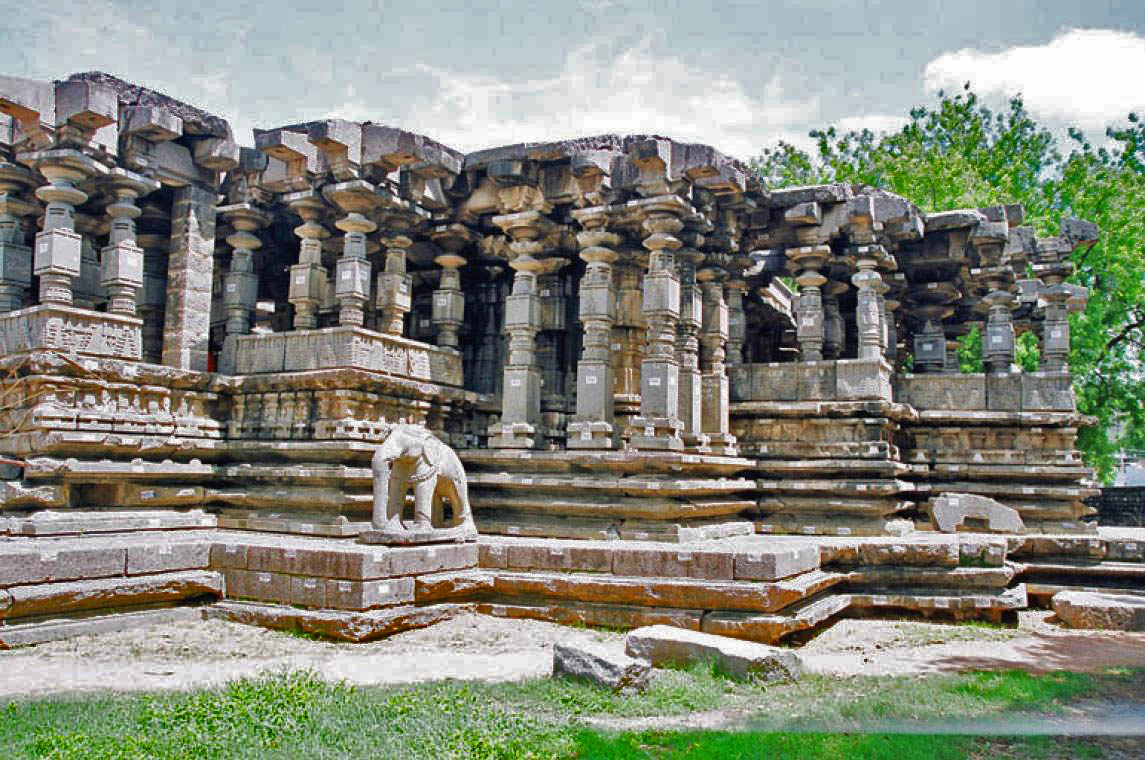Today we’ll look at the Thousand Pillar Temple, which is at least 750 years old and is one of India’s oddest ancient buildings. It appears to be a conventional temple at first glance, yet there is something fundamentally unusual about this temple since there are no apparent seams between the stone blocks in the temple’s walls.
This is a vast temple, but do you spot any joints as I walk from the base to the top? This leads some to believe that, like the Kailasa Temple, the entire temple is built of one solid rock, however, archeologists reveal that it is made up of several stone blocks.
An army led by Muslim King Allauddin Khalji attempted to demolish the temple in 1300 A.D., and while they were able to break many of the stone blocks from the ground and ceiling because they were simpler to dismantle, they were unable to dismantle the stones on the walls. These are newer stone slabs installed by the Archeology department, and you can see how these blocks are loosely linked if you look at the floor.

When comparing current stone construction to ancient techniques, modern technology looks to be rather rudimentary because the seams are visible. The archeological department has been working to rebuild the temple after Allauddin Khalji’s troops destroyed it and vandalized it.
What is the significance of the name ‘Thousand Pillar Temple’? Most tourists are perplexed as to why this temple is named as the Thousand Pillar Temple although it lacks a thousand pillars. It’s named for the fact that it’s constructed up of 1,000 stone blocks. However, we can detect significant evidence of connections between the blocks in even the most advanced temples, such as the Lepakshi temple, but the joints are not evident in this temple.
The fact that these blocks were not joined with cement, mortar, or adhesive is interesting. How did ancient builders reach such a high quality of jointing hundreds of years ago? What type of technology was in use at the time, and how was such a temple constructed?
This is the underlying technology:
Each stone block has at least a dozen separate incisions, resulting in a complicated interlocking structure. These intricate incisions optimize the surface area shared by the connecting blocks, resulting in a very tight fit.

It’s difficult enough to link two stone blocks together, but the picture utilizes multiple stone blocks on both sides and the number of cuts required to connect four or five blocks together. I mean, this is just remarkable technology. This is possible with wood, but how did they create these incisions on massive stone slabs hundreds of years ago? It’s one thing to make these incisions; it’s another to acquire the level of accuracy required to make these junctions undetectable.

With rudimentary equipment, we can readily see that constructing a big edifice with no apparent seams is impossible. Did ancient builders employ modern-day cutting, drilling, and polishing tools? Is there any proof of these instruments in the temple itself, if that’s the case?
What do you think of these carvings that seem like current drilling and polishing tools? We generally find carvings of Gods in temples, but in one temple, we can observe tool-like sculptures with a conical, striated top and a long shaft, which are very similar to modern-day tool bits.
Simply said, ancient carvings and today’s tool bits may be compared side by side. You have to admit that there is a startling resemblance. Is this a coincidence, or did ancient architects create these exact interlocking systems with tool bits similar to ours?
Drilling equipment was utilized, according to the pillars in the temple. These pillars have extremely little holes bored into them. My companion is trying to thread a needle through the tiny holes, but they are too small for even a needle. The priest is delighted to assist us; he takes something thinner than a thread and skilfully threads it through these holes.
How can you explain such small holes engraved on the pillars if you don’t believe these carvings are drill bits? How can you explain how a whole temple was built with no apparent joints? Were they made with sophisticated machinery or with crude chisels and hammers?
Source: https://anciently.net/








